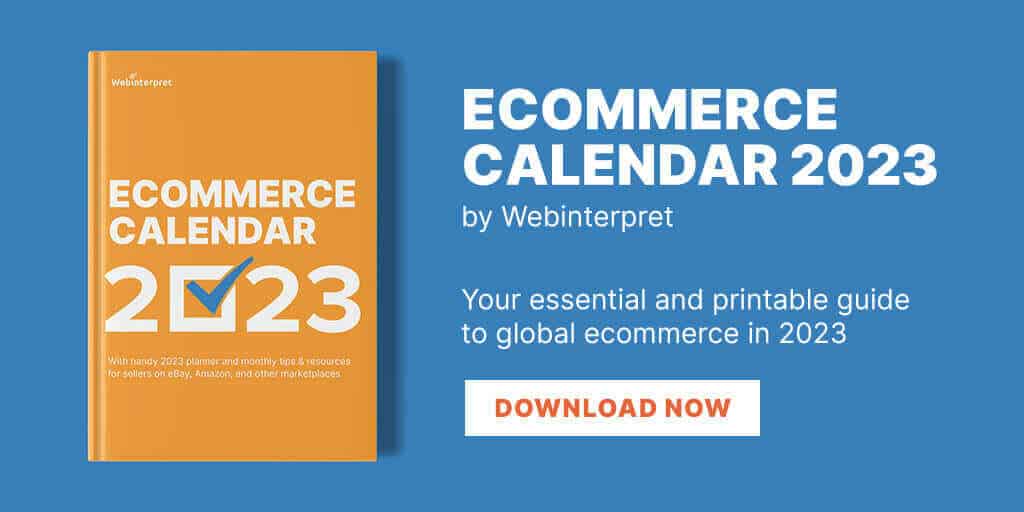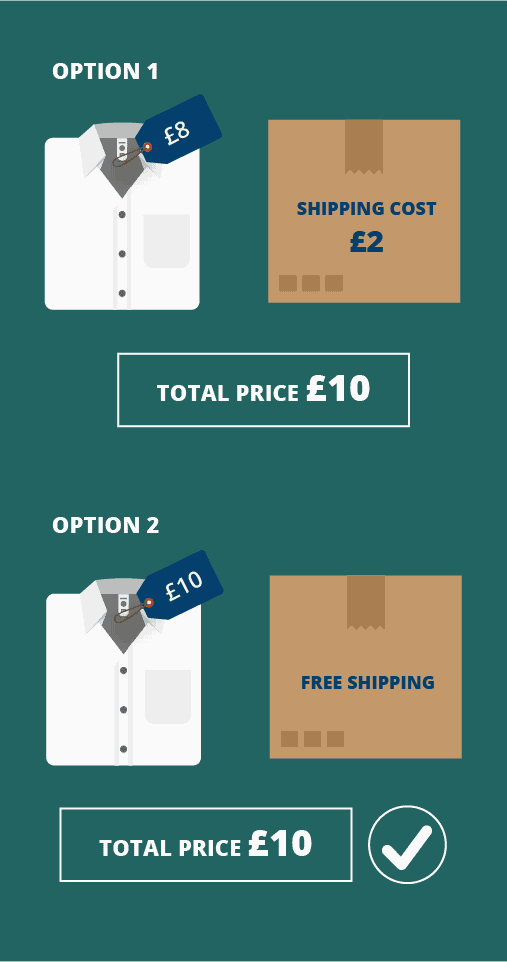
7 ecommerce shipping practices to grow international sales
Does your ecommerce shipping strategy actually help you grow your sales?
Answering this question goes beyond offering attractive shipping rates.
Whether you sell in your domestic market or ship globally, there are a number of proven shipping practices and tactics that can successfully increase your online sales.
In this article, we’ll share with you:
- 7 best practices for international ecommerce shipping
- Practical checklist and actionable tips
- Expert advice to give you ideas on how to effectively optimize your shipping strategy and sell more.
Here’s how to use shipping to grow your sales!
Learn 7 ecommerce shipping practices! Download our FREE practical checklist & tips for easier reading and sharing with coworkers.
Ecommerce shipping best practices
Ecommerce shipping includes all services required to transport products purchased online from a seller to the customer’s delivery destination. This also involves addressing customer delivery needs.
The following best practices will help you grow your ecommerce sales:
- Offering multiple delivery options
- Optimizing shipping in your ecommerce listings
- Using marketplace fulfillment centers
- Offering free shipping
- Meeting online buyer expectations
- Choosing sustainable & environmentally-friendly shipping
- Automating your shipping system.
#1 Offering multiple delivery options in ecommerce
Different buyers, different needs. It’s not only about the products and brands that they choose, but also the delivery options that they can select.
Online buyers have different delivery preferences.
If the buyer:
- Expects the lowest price, they’ll probably prefer a standard untracked postage
- Needs an order urgently, they’ll look for a same-day or express delivery
- Won’t be around to collect the parcel at the delivery address, they’ll want a Pick Up Drop Off (PUDO) service.
Ecommerce sellers should offer their customers multiple delivery options to address their specific needs and improve their customer experience. This is even more important when you sell and ship globally. For instance, one of the key delivery options in Poland are smart parcel lockers called “paczkomaty”: not providing this option for Polish buyers may cost sellers a lot of lost orders.
Additionally, in the current reality, it’s important to address the needs of buyers affected by Brexit, i.e. those ordering goods that have to cross the UK-EU border.
Consider offering Brexit-affected buyers 2 options:
- DDP (Delivered Duty Paid): the seller takes the maximum responsibility for import clearance and payment, which speeds up delivery times across the border. Additionally, DDP minimizes the risk of unexpected costs at the delivery point and the customer’s frustration. However, it also means higher final shipping prices, which can lower conversions.
- DDU (Delivered Duty Unpaid): the seller meets all costs except duty or taxes of the importing country. DDU can work better for conversions due to lower shipping prices in product listings. However, there’s a risk of worse buyer experience if the buyer doesn’t expect extra costs at the delivery point.
Note that not all marketplaces will allow you to offer both DDU and DDP, but DDU only. On such marketplaces, you need to estimate taxes/duties and include them as a fixed amount in the shipping price.
eBay & Amazon Bestsellers: FREE Download
#2 Optimizing shipping in your ecommerce listings
To minimize your shipping costs, take a closer look at your shipping rates, especially when you sell and ship internationally. For example, do you have a flat rate set for all countries from a particular region? Or do you have a flat rate set for a group of similar items?
Now consider this.
Let’s say you sell products from the UK. You may have one shipping rate for the EU, one rate for the rest of Europe and one for the rest of the world.
However, what if shipping from the UK to Germany is much cheaper than shipping from the UK to Italy? In this case, the same rate for the two countries is not the most cost-efficient option!
The bottom line:
It would make more sense to set a shipping rate per country. You can go even further and set your shipping rates per country and per item/listing.
Additionally, if you sell on multiple marketplaces (e.g. on eBay, Amazon, cDiscount, etc.) make sure that your shipping prices are consistent across all platforms. This way conversion rates on a given marketplace won’t be impacted by your shipping prices.

#3 Using marketplace fulfillment centers when you ship globally
If you ship a higher volume of fast-moving items to a given location, you’ll probably be better off having inventory closer to your end customers. For example, if you’re a British online seller trading in the USA, consider storing fast-moving items in warehouses closer to your US customers.
If you ship internationally, fulfillment centers can significantly shorten shipping times. Shipping products in-country eliminates the hassle and delays of cross-border commerce. One way to deliver goods quickly and efficiently across the borders is to use a fulfilment center, e.g. Fulfillment by Amazon (FBA).
Advantages of using a fulfillment center:
- Shorter shipping times
- Better shipping rates
- High-quality customer service
- Using a fulfillment warehouse will allow you to store your inventory in a single location.
Marketplace fulfillment solutions help sellers:
- Ship goods faster and cheaper
- Maintain good ratings
- Sell more as items gain visibility.
Using fulfilment centers may be even more important in the post-Brexit reality as moving goods across the EU-UK border has become less straightforward and prone to shipping delays.
However, bear in mind that using fulfilment centers may put some extra demands on your business. For instance, you need a VAT number in the country where you store your goods (e.g. if you use a warehouse in France, you need a French VAT number).
Further, If you use a marketplace fulfilment solution, you need to pay extra if you sell products outside of that marketplace. Additionally, you usually need to pay a premium if your items are stored for a long time.

#4 Offering free shipping in ecommerce
Never surprise your customers with unexpected shipping costs: they won’t like it. The psychological barrier is significant here and many buyers will abandon your shopping cart.
So either remove the shipping cost or make it clear upfront that there is one to pay.
Removing shipping costs and offering free shipping means that you add them to the item price. For example, instead of asking £8 for an item and £2 for shipping (total £10), ask for £10 and say you will ship the order for free.
#5 Meeting online buyer expectations in ecommerce shipping
Ecommerce fulfillment demands are driven by increasing consumer expectations, the need to enhance customer experience and the continuous pursuit of speed and efficiency.
Buyers tend to feel particularly distressed when it takes too long for the parcel to arrive. The risk of shipping delays seems much higher when goods have to travel across borders, which can cost your customer lots of stress and yourself some bad reviews!
Keep up with online buyers’ delivery expectations:
- Deliver products on time, especially when they’re sent abroad.
- Address different buyer needs and offer multiple delivery options.
- Set the right expectations and advertise the type of shipping service you’re offering at the checkout stage.
- Provide your customers with a reliable parcel tracking service and accurate information (like the driver’s location). This will give a sense of security to the buyer, but also to yourself, e.g. when one of your packages gets lost or damaged.
- Offer uncomplicated returns requiring little effort from your customers.
- Be there at critical moments, i.e. when customers need support or have questions. The accessibility of your support service is often decisive for completion of the sale.
#6 Choosing sustainable & environmentally-friendly shipping
In light of our planet’s finite resources, consumers are increasingly becoming aware of the need for sustainability. In fact, the pandemic has deepened consumers’ environmental concerns.
What’s your online business’s take on environmental issues?
Based on IBM’s “Meet the 2020 consumers driving change” report:
- For 8 out of 10 consumers, sustainability is an important factor in their purchasing decisions
- 6 out of 10 consumers are willing to change their shopping habits to reduce environmental impact
- Most respondents would pay an average premium of 35% for an environmentally-responsible brand.
No wonder that more and more buyers are looking for products and brands that align with their eco-friendly values.
The result? Retail is going green.
To gain eco-conscious customers’ loyalty, sellers should strive to create more sustainable & greener practices for their businesses, for example by:
- Using eco-friendly shipping practices and partners
- Consolidating orders from the same user into one package
- Choosing boxes that are correctly sized for specific products (avoid redundant packaging)
- Use sustainable, reusable packaging
- Giving customers a green shipping option at checkout
- Offering environmentally-friendly products.
Finally, collaboration in the shipping industry increasingly involves implementing environmentally-friendly practices and green initiatives. Endeavours to limit high levels of pollution created by the freight industry is likely to have a pretty big impact on the ecommerce sector.
#7 Automating your shipping system
Most online sellers feel confident about delivering goods on their local markets. Unfortunately, their experience and expertise often fall short when they sell goods across borders.
Even though it’s possible for sellers to manage international shipping without using an automated solution, in many cases this means:
- Large overhead costs
- Huge time investment
- Limited control over delivery-related matters, e.g. not having good deals with couriers, not having the right data or time to spend on shipping settings.
Webinterpret’s AI-powered shipping solution helps marketplace sellers streamline and optimize their domestic and international shipping processes by:
- Increasing the choice of carrier services available in your listings
- Automatically setting shipping prices in listings and guaranteeing the price
- Offering competitive shipping rates
- Providing shipping management software.
Ecommerce shipping best practices: conclusion
As buyer expectations of ecommerce shipping are increasing, sellers need to continuously strive for speed and efficiency as well as impeccable customer experience. This is also important when goods are delivered internationally.
Staying on top of the shipping game also means considering:
- Changing consumer expectations
- Modern drive for sustainability.
- Automating shipping processes.
Don’t wait to grow your sales with your shipping!
Related Posts:
Ecommerce Newsletter
By clicking the “Subscribe now” button, you agree to receive our monthly e-mail newsletter and regular marketing and commercial communications by email from Webinterpret regarding marketing trends and our digital marketing services. You confirm that you have read and agreed to Webinterpret’s Terms of Service and Privacy Policy.






